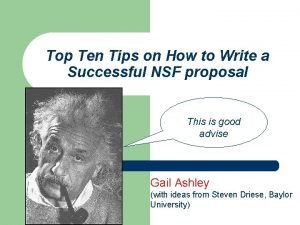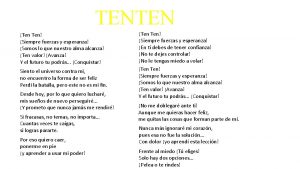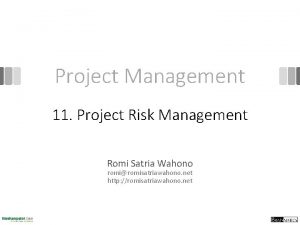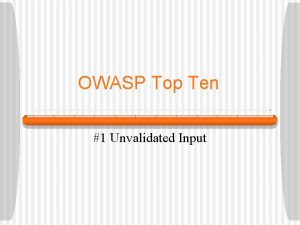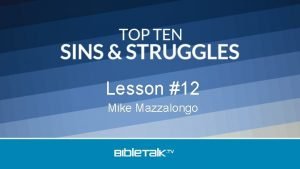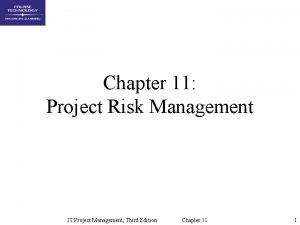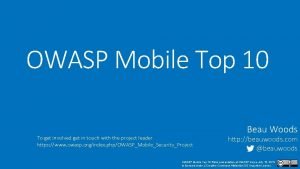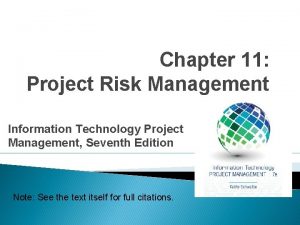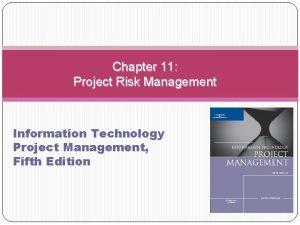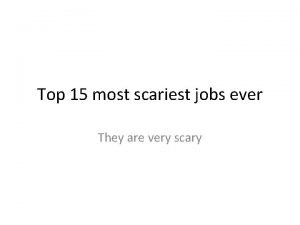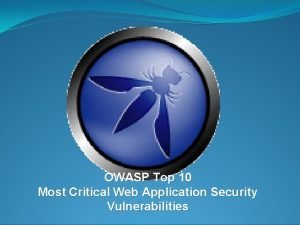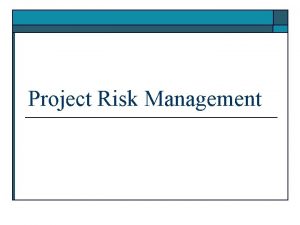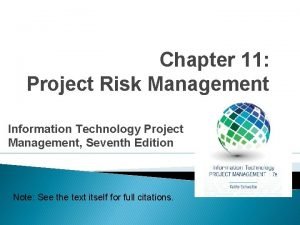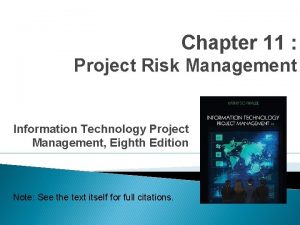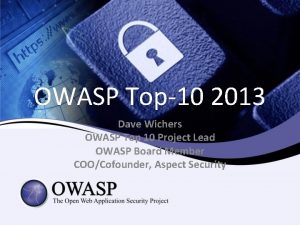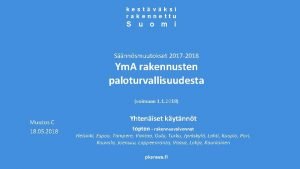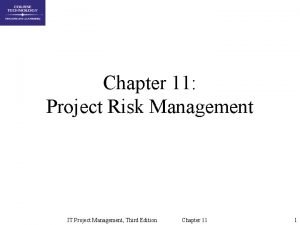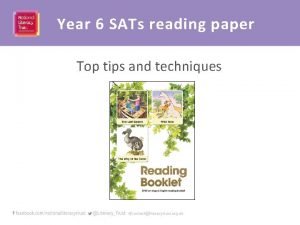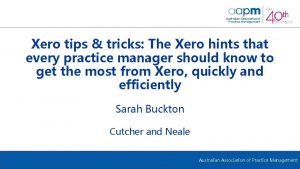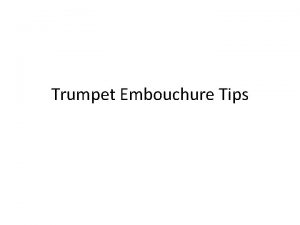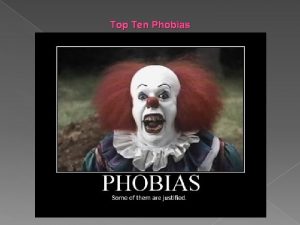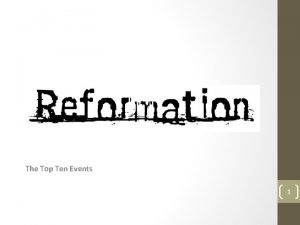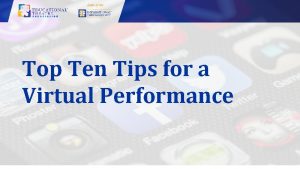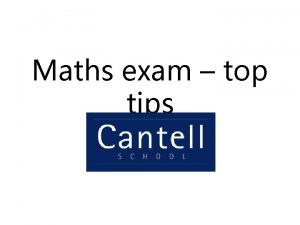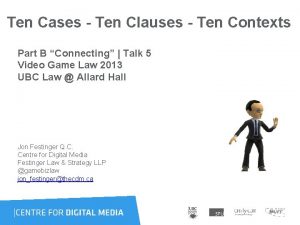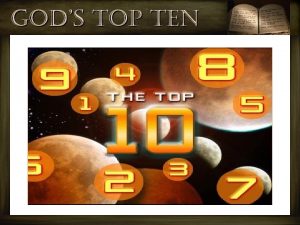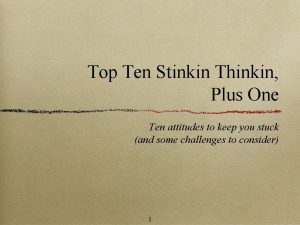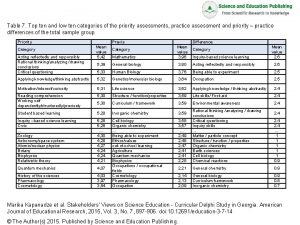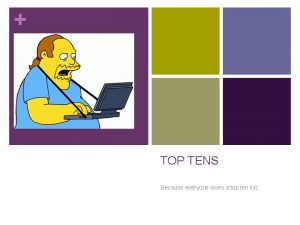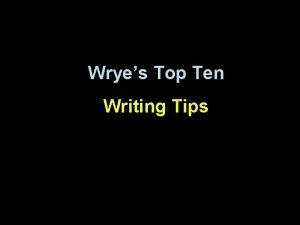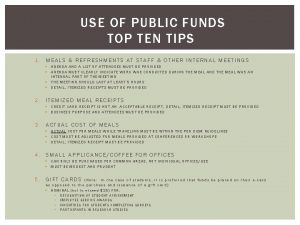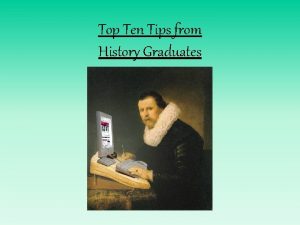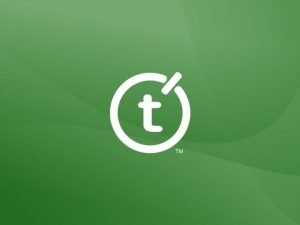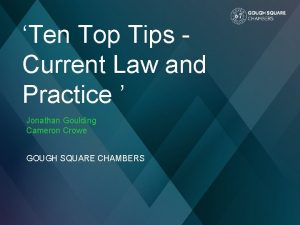Top Ten Tips on How to Write a


























- Slides: 26

Top Ten Tips on How to Write a Successful NSF proposal This is good advise Gail Ashley (with ideas from Steven Driese, Baylor University)

Outline of this talk l How NSF and other federal granting agencies “work” in terms of proposal solicitations, reviews, panels, politics. l How to structure a successful proposal. Top ten tips! l What to do when you succeed …. . or fail?

How the NSF process works RFP’s are on NSF website (www. nsf. gov). Time frame for the review (for example)… Submit a proposal on July 15 th It goes out for review with ~100 other proposals July-September 8 reviews solicited, but usually 3 -4 received)

The Review l Reviewers weigh the relative merits of: l Intellectual Merit Probability of success Feasibility Applicant’s qualifications Preliminary work Broader Aspects l l l

The Reviewer (they vary) The best possible case: l You receive a through constructive and positive review. Worst possible case: l A busy researcher with too many demands on her/his time. l Will compare yours with the 2 or 3 others that they have been asked to review l Will read it in 60 min or less l Will compose his/her review in less than 30 min Therefore, the proposal must be extraordinarily well written

Review Scores The Politics of Scientific Proposals l E Excellent; Fund it! l VG Very good; Fund it if there is money l G Good; Don’t fund it; proposal needs work l F Fair; Proposal is NOT GOOD. Kiss of death. l P Poor; fundamental rethinking needed before resubmission

The Panel l l 2 -3 days in Washington 10 -15 minutes per proposal at the Panel Will have 20 -25 to shepherd through the system Will rely on reviews and the author’s Summary Statement (The most important part of the proposal)

The inside scoop l l l It’s NOT an “old boys” club Big names get rejected just as often as new comers (senior investigators get declined!) Having had an NSF proposal has no bearing on your new proposal – Except that if you repeat the winning formula, your chances are much higher

Characteristics of a strong proposal l l Good ideas……Innovative and clear A concretely defined topic with limited scope Substance is essential An engaging and accessible writing style Clear and concise (15 page limit); no jargon

Top Ten Tips on How to Write a Successful NSF proposal

Tip 1 - New ideas or approaches l You need new ideas l A Quote from an NSF Research Program Manager “ 90% of the grant’s likelihood of success is based on how novel your questions are — ideally they are ones that have not been thought of or posed before”. • Or, propose a new way forward on a problem where the field is stuck 1. A new model 2. A new analytical technique 3. A new conceptualization

Tip 1 - New ideas or approaches l Create a team to cover the expertise required to do the job. l Team up with high fliers. l Increasingly, multidisciplinary research projects are funded over single disciplinary projects.

Tip 1 - New ideas or approaches Bring together sub-fields not yet integrated

Tip 2 A captivating title is essential The hydrology of the Santiam River watershed Boring Exciting! Catastrophic flooding and hill slope activation during droughts

Tip 3 A compelling introduction l l l Needs a “snappy” lead sentence to catch the reader’s attention. This is CRITICAL to the proposal. Includes discussion why previous studies have been insufficient to resolve the problem and how you can remedy the situation. Explain why your site (or experiment etc. ) was chosen for the study. End with specific HYPOTHESES to be tested. You need to engage the reviewer in the Introduction ……. . or risk loosing her/his attention for the remainder of the proposal

Tip 4 Clearly stated research questions l l Purpose of inquiry? State research questions (a few) State hypotheses stemming from the questions Emphasize questions with headings

Tip 5 Provide detailed methodology l l Explain how you are going to collect and analyze data to answer questions and test hypotheses. Give a schedule of tasks. What you propose to do must be feasible in the timeframe of your grant.

Tip 6 Demonstrate likelihood of success l l NSF is not risk tolerant Use seed money to show proof of concept (do some of the research to prove that it can be done!) Show a key graph of preliminary data demonstrating some chance of success Go big or stay home…. – Challenge some top model or some well established approach or procedures.

Tip 7 Cutting-edge Reference List (comprehensive, but not exhaustive) l l Include carefully selected references and cutting-edge literature on the topic focusing on refereed journals, rather than abstracts and gray literature. Include all key references (but be selective) Reviewers may be chosen from your reference list References are NOT included within the 15 page limit

Tip 8 Realistic budget l l Be accurate; be reasonable; don’t pad Find out what size grants are the norm for the program to which you are applying and get into that “ball park” Know what the funder will pay for and will not pay for…talk to your program manager. Use the “Budget Justification” pages to explain your costs.

Tip 9 Discuss significance of study l l Demonstrate that you have thought about the usage of your findings. How findings will influence other fields How findings will challenge or confirm an existing theory or paradigm How findings will lead to improvements of an existing model.

Tip 10 A clear, concise, comprehensive Proposal Summary l The Proposal Summary is a separate page placed at the front of the proposal. It concisely presents the ideas, methods and expected outcome of the proposal. “Intellectual Merit” “Broader Impacts” l Reviewers, panelists and Program Managers refer to this page extensively. .

Summary l l l l l Tip 1 - New ideas or approaches Tip 2 - A captivating title Tip 3 - A compelling introduction Tip 4 - Clearly stated research questions Tip 5 - Provide detailed methodology Tip 6 - Demonstrate liklihood of success Tip 7 - Cutting-edge reference list Tip 8 - Realistic budget Tip 9 - Discuss significance of study Tip 10 - A clear, concise, comprehensive proposal summary

What if your proposal is declined? l l l l Don’t take it personally Don’t react emotionally Talk to your Program Manager and consider resubmission Don’t beat your head against a wall There are lots of problems to explore Work different angles Try another agency Try something else

What if your proposal is accepted? l l l Leverage, leverage Cite it, cite it – presentations, web Publish, publish Develop a rapport with the program manager Write related proposals to NIH, NSF, NOAA, ACS-PRF, NASA, DOD etc. Submit future NSF proposals that build on the outcome and the format

Good Luck
 Top ten tips
Top ten tips Like to count ten at time ten،……..thirty ,fourty
Like to count ten at time ten،……..thirty ,fourty Ten ten siempre fuerzas y esperanza
Ten ten siempre fuerzas y esperanza Amia 10 x 10
Amia 10 x 10 Top ten risk item tracking
Top ten risk item tracking Unvalidated input
Unvalidated input The ten sins
The ten sins Probability/impact matrix
Probability/impact matrix Owasp top 10 mobile vulnerabilities
Owasp top 10 mobile vulnerabilities Top ten risk item tracking
Top ten risk item tracking Top ten risk item tracking
Top ten risk item tracking Top ten risk item tracking
Top ten risk item tracking Scariest jobs
Scariest jobs Owasp definition
Owasp definition Top ten risk item tracking
Top ten risk item tracking Top ten risk item tracking
Top ten risk item tracking Top ten risk item tracking
Top ten risk item tracking Top 10 owasp 2013
Top 10 owasp 2013 Top ten mathematics
Top ten mathematics Pientalon palokortti
Pientalon palokortti Figure 11-4
Figure 11-4 Write 17 and 3245 ten thousands in decimal form
Write 17 and 3245 ten thousands in decimal form Cache memory adalah
Cache memory adalah Sats revision tips
Sats revision tips Xero practice manager demo
Xero practice manager demo Marketplace simulation tips
Marketplace simulation tips Embouchure for trumpet
Embouchure for trumpet
